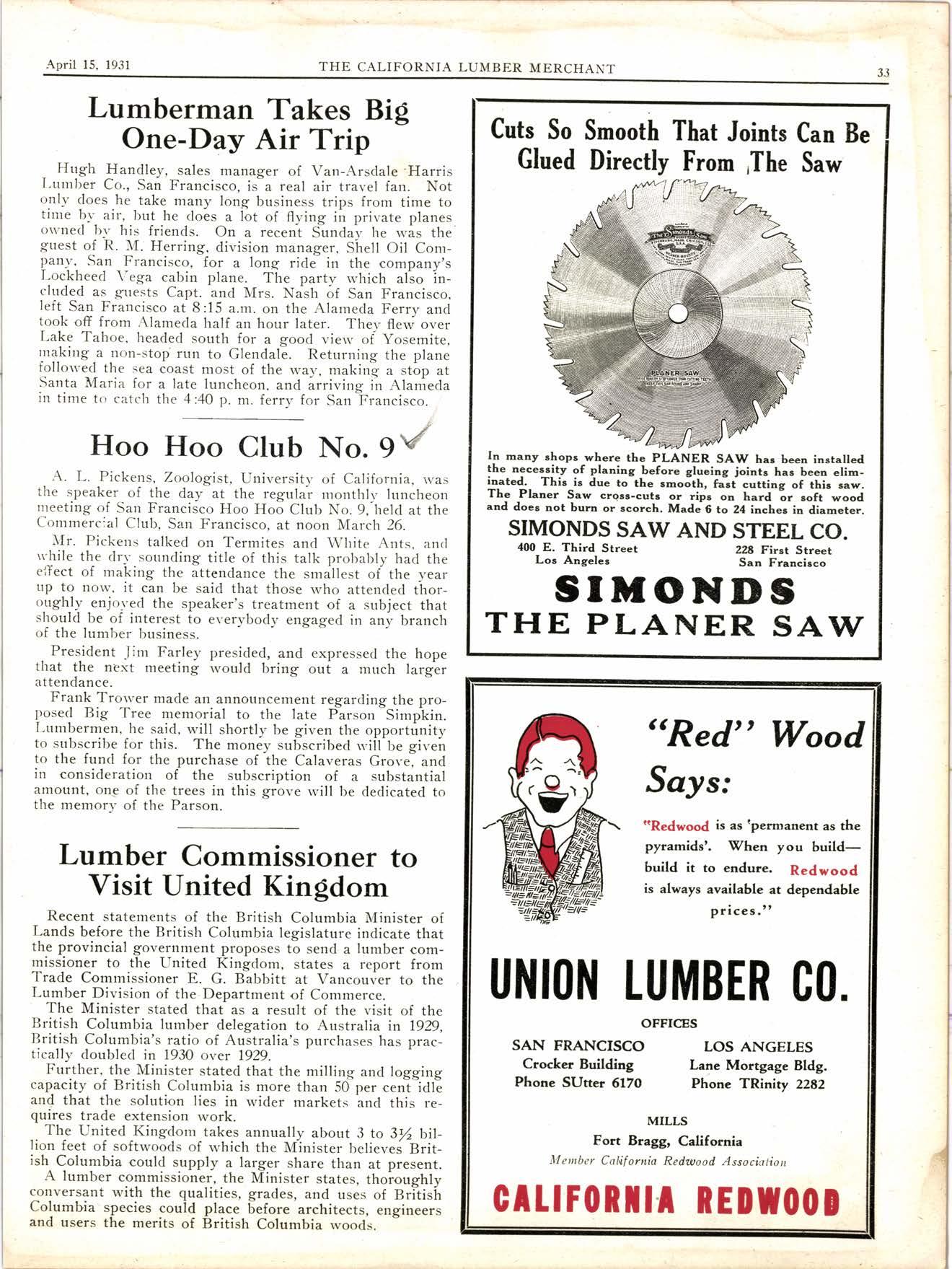
3 minute read
Trade Promotion
By Frank Burrraby, Sun Lumber Co., Beverly Hills, Cdif.
An address delivered at the meeting of the Lumber and Allied Products Institute of Southern California at Los Angeles, Apil7, l97l
Trade promotion involves a great many activities, but the particular phases detegated to me for discussion are the following:
Promotion of Confidence between ourselves as competitors, or
Promotion of Good Will toward our Association activities, on the part of those to whom we desire to sell our .mer,chandise.
Promotion of Demand for those commodities which we have for sale.
Promotion of Confidence between ourselves is developed almost altogether by such gatherings as this and other types of asJociation-activity-now being spo-nsored by the trimber and Allied Produits Institute of Southern California, and the closer and more successfully we work together through our Association the more confidence is inJpired in each other as we go out to compete for business on other than a price basis.
A number of dealers rvho have operated in this market for periods ranging from ten to forty years have told me recently that a moie friendly feeling and a greater degree of confidence exists among the lumber dealers in this District at present than has ever existed before: This, I. consider, a ^'uety t.-a.kable situation, in vierv of the -existin-g general business depression, and we will all profit handiomell' by building upon this friendship and confidence in every possible manner'
For the purpose of promoting confidence between each other, I recommend that we all attend every local lumb-er sathering possible ; that we make frequent personal calls 5n each othet; that we at all times exchange information and frankly discuss our problems rvith our fellow lumbermen.
The matter of promoting the good rvill of the buyer toward the seller's association activities is a possible activity which is undoubtedly very badly neglected by most trade associations.
The ideal association,'1'ou rvill all agree, would be one that not only developed good will and real profitable cooperation atttottg its members as well as promoted profit"61" n"* busineis, but also had the good rvill of the buyer to an extent that materially reduced or altogether eliminated the tendency on his part to beat dolvn our,prices; make us carry his finan'cial burdens and over-service him all along the line.
My recommendation on this phase of trade promotion is that we as individuals and as an association, frankly exolain the purposes and activities of our organization to the Architect, tha Builder, the Building-Loan institutions and others interested in building.
Remind them that open price competition means poorer merchandise; less service to the buyer; the encouragement of the unscrupulous lumber dealers, etc., and results in a general dis-organization of the building trade that hurts everyone connected with it, as well as discourages all sorts of new building. We should also tell them that stable prices result in a better quality of merchandise, more service to the buyer and greater efiort on the part of each dealer to merit his full share of business.
The thing that I have been asked to sponsor and emphasize most strongly in this short talk is Group Advertising, and I feel absolutely certain that there is no program which our Association could undertake at this time that would bring us better returns than a program of cooperative advertising to the public that advocated home ownership; the use of higher grade building materials, grade marked lumber, the modernization of old structures, the promotion of nerv buildings and the like.
I would suggest the use of billboards, radio and newspapers. Practi'cally all retail lumber yard advertising at present is in the nature of an effort to convince the prospective buyer that the products of the advertiser are supeiior to those of his competitor, and from the standpoint of the inclustry as a rvhole accon.rplishes nothing, rvhile group advertising of course, would have for its object the promotion of denrand for general luml>er yard rnerchandiseu'ould certainly cost less than individual advertising effort and be much rnore effective. There is hardly a chance to get over orlr program of grade rnarking. except b1'creating its dernand through advertising to the public.
Group advertising rvould not only be sure to itnprove the demand for our merchandise, but u'ottld rnake each one of us as members of our Association feel that the Association was doing us sonre real practical, substantial, direct good. It would also make our customers feel that lve were trying to promote business for them, and consequently help us in our efforts to obtain their suoport to all our association activities.
Numerous cities large and small have carriecl on advertising programs of this nature with very ffreat success. Sometimes the advertising has been financed by lumber and material dealers alone, bttt usually b,r' all the variou/ trades that profit through building activities, including financial institutions ancl such merchants as hardware and furniture dealers. They have in some cases included architectural and contractor groups.
My thought is that if such a pro€lram rvas instituted here the same should be started by our Association alone; probably started financially by the collection of one month's extra dues or an assessmetrt based on volume of business done by the various members over a given period, and as soon as su,ch work was under way every local organization interested in building shoulcl be approached for financial support. This, of course, rvould include the sash and door group, hardrvood flooring group, the roofing manufacturers ind dealers, various financial institutions, and possibly we could get help from the West Coast, the Redrvood and the National Lumber Manufacturers associations.
In closing let me particularly emphasize the fact that no
(Continued on Page 19)










